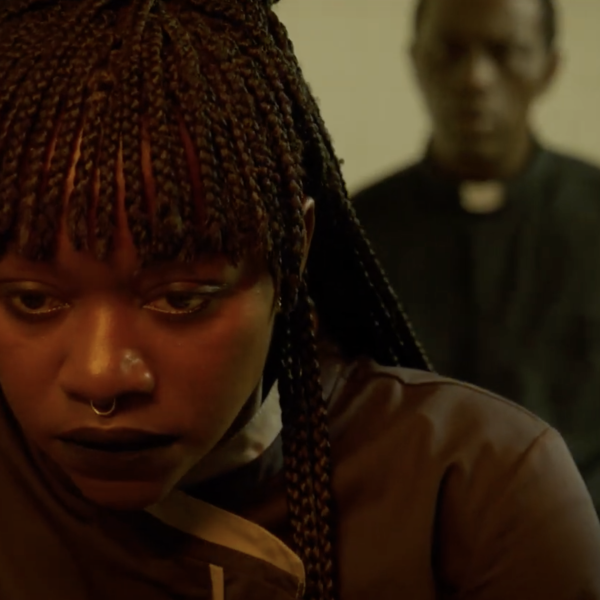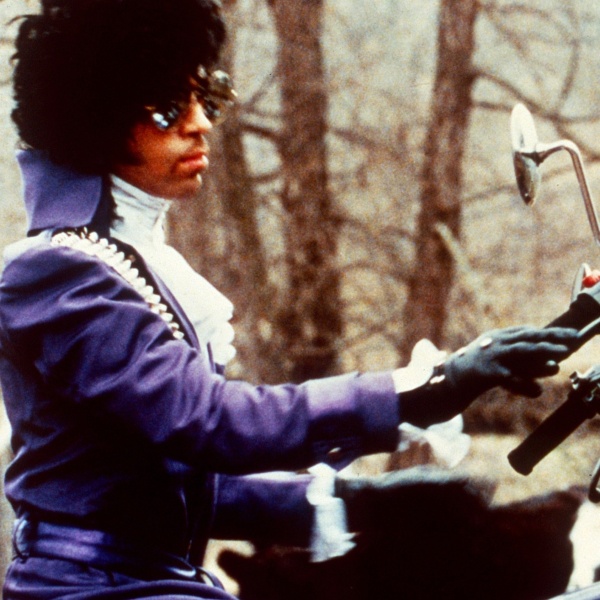In “Twisters,” each of the six major tornadoes that visual effects supervisor Ben Snow created were based on a real-life tornado. In the case of the film’s final tornado, which anchors the third-act climax, it was inspired by three different tornadoes, one of which was the 2021 twister that devastated Mayfield, Kentucky, and killed 76 people.
There is a photo from inside a Mayfield movie theater that played a particularly important role in director Lee Isaac Chung’s conception of the film: The tornado’s winds, having ripped out the theater’s screen wall, left a movie screen-size hole which perfectly framed the real-life destruction next door. Beyond staging the climatic scene in a similar-looking movie theater — our heroes seek refuge there, unable to find an available basement in time — the photo spoke to Chung on a number of different levels, which he talked about while on the Filmmaker Toolkit podcast.
“When you see that photo, you can’t help but really be sober about what tornadoes can do,” said Chung. “We’re making a movie about tornadoes and it’s got to be a wild and funny, kind of a silly, campy adventure, but also we’re talking about something very serious that’s happening in the real world.”
From early on, the photo was in a place of prominence on Chung’s mood board for the film. In the back of his head, Chung knew “Twisters” could come out in the middle of an intense tornado season, and even if we are spared a mild tornado season this summer, there would still be those in the audience who had lived through similar destruction.
“We thought about that a lot, and that was the design we were going for with the last sequence,” said Chung. “It’s just a real thing that people are going through, and we wanted to treat that with respect. Patrick Sullivan, our production designer, he worked on the first film (the 1996 “Twister”) as well. One of the big things that he circled was that he wanted to get the destruction right, because he felt with Wakita [the Oklahoma town setting for “Twister”] there were certain details they didn’t get right.”

According to Chung, set decorator Missy Parker pulled trees wrecked by actual tornadoes to use on “Twisters.” In designing the rubble and destruction, Sullivan and Parker dressed and designed the homes before they were taken apart, making sure remnants of people’s lives were as present as the destruction itself. There would be a need to create the scale of the damage, but also the sense of the individual lives upended.
Beyond being a sobering reminder of what tornadoes can to do, the photo spoke to Chung on a number of other levels as well.
“It has a lot of meaning, it’s just a beautiful picture [with] a lot of very metaphoric layers,” said Chung. “I’ve personally felt like I need more chances in my life to really look at things that are much bigger than myself, that fill me with awe. And I love this sense of something smaller, a smaller screen ripping out to something much bigger. And that kind of revelation in some sense is something that I’m ultimately always after, that’s something that I thought a lot about too.”

The photo also served as a constant reminder to Chung of the new challenge he’d taken on with “Twisters.” The director’s previous films were smaller, and more personal. His biggest hit was the 2020 A24 film “Minari,” which premiered at Sundance, and is a semi-autobiographical story about his immigrant parents moving their young family to an Arkansas farm in search of their own American dream.
“Working on this movie, I felt like my driving goal was to get people into the theaters. That was a big shift from the way I was working on previous films, where it is much more about simply the craft of it, simply telling a story, or remembering things,” said Chung. “I really wanted to take on that challenge of making a summer movie and trying to get people into the movie theaters, and that was all happening as we’re having discussions about what’s going on with theatrical, the pressure of that. In some ways, Kate (Daisy Edgar-Jones) is a filmmaker, trying to see if she can do something about that, to save this place.”
Subscribe to IndieWire’s Toolkit podcast on Spotify, Apple, and other major podcast platforms.





